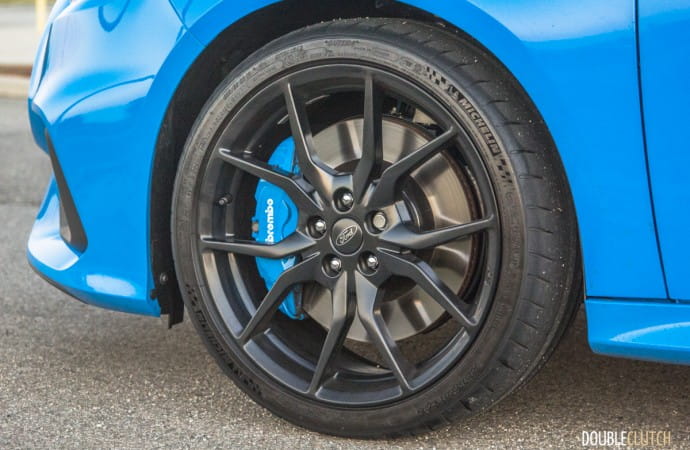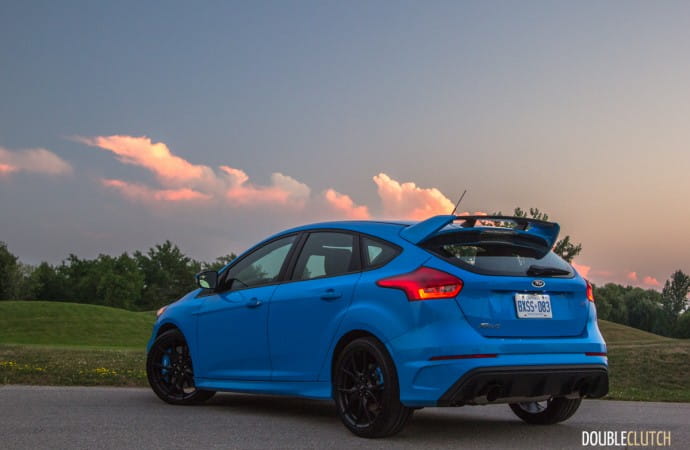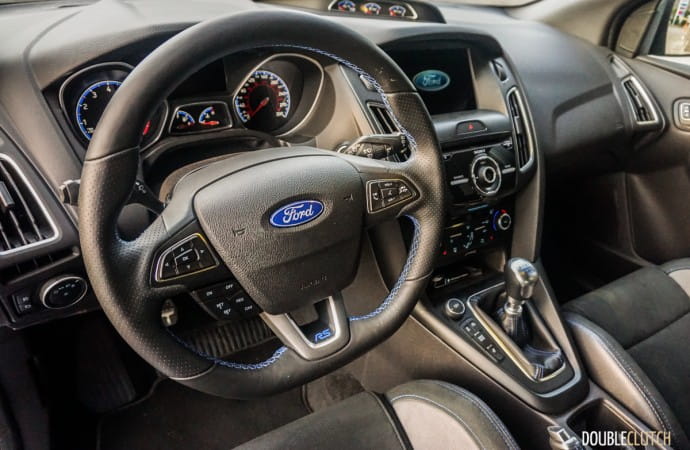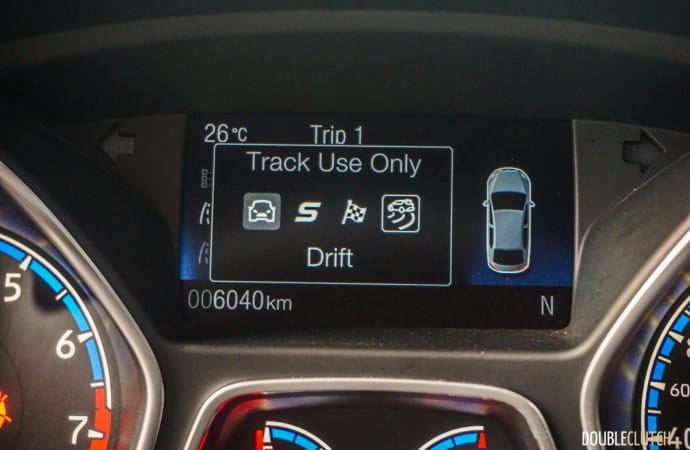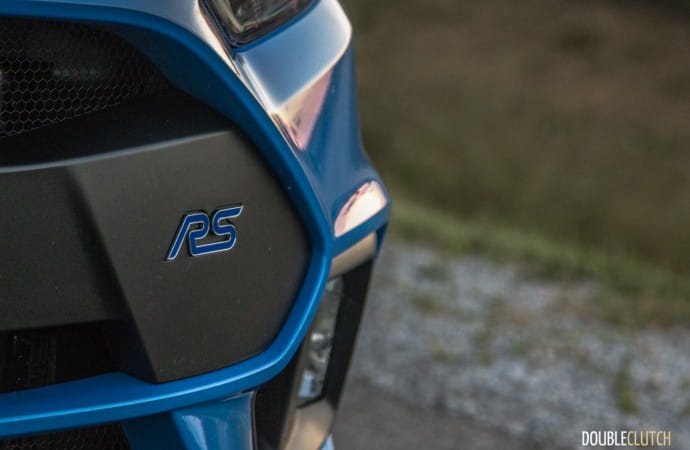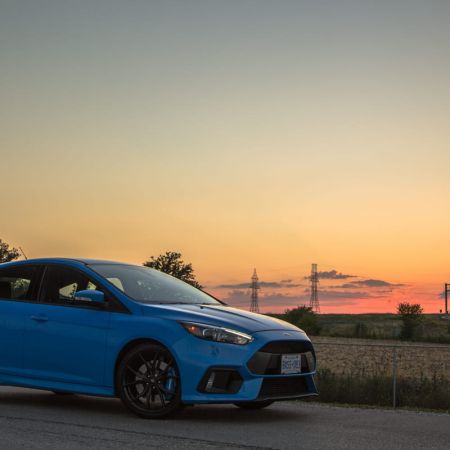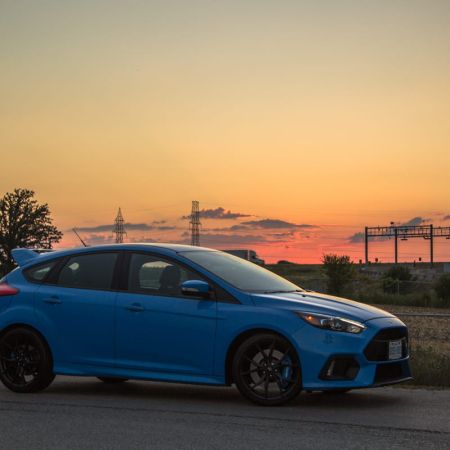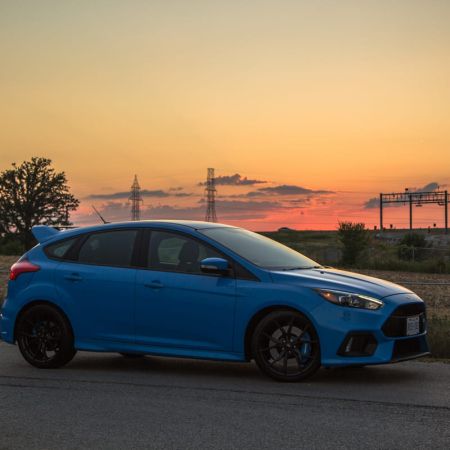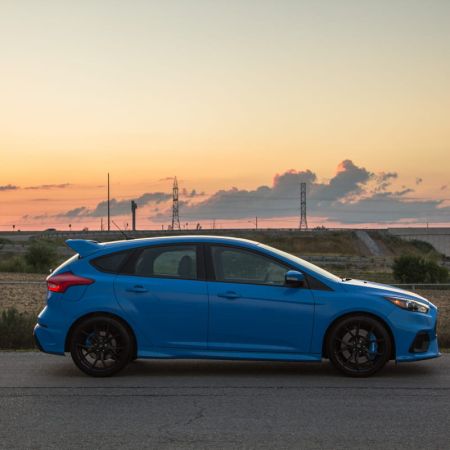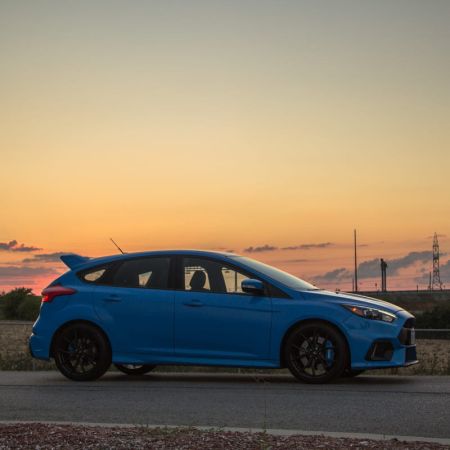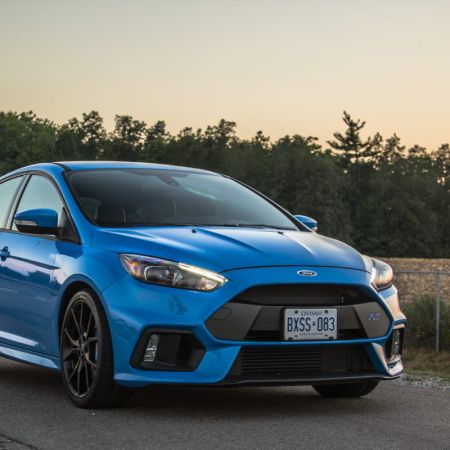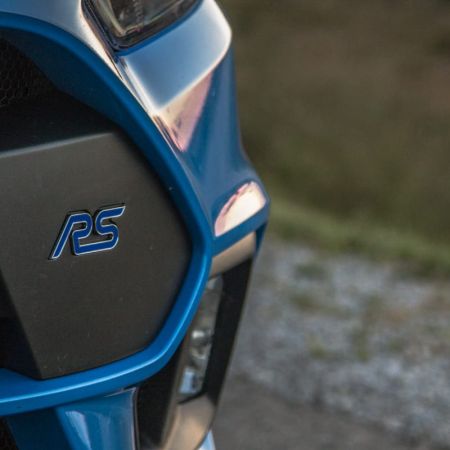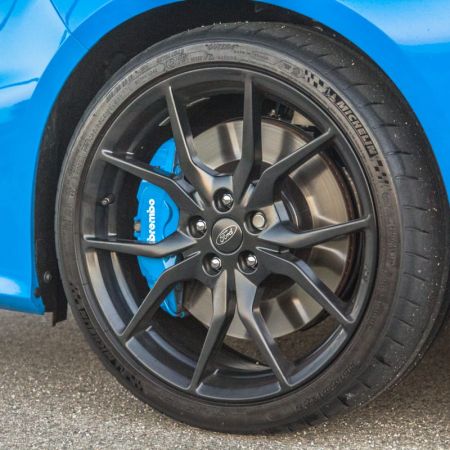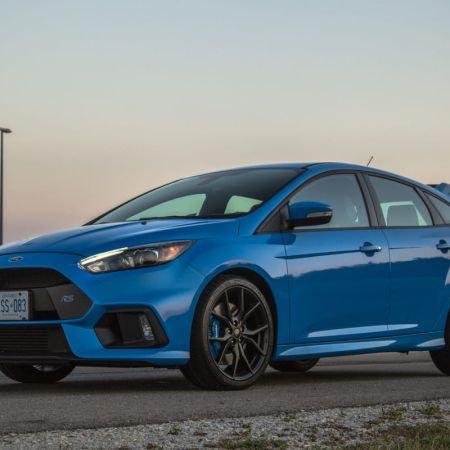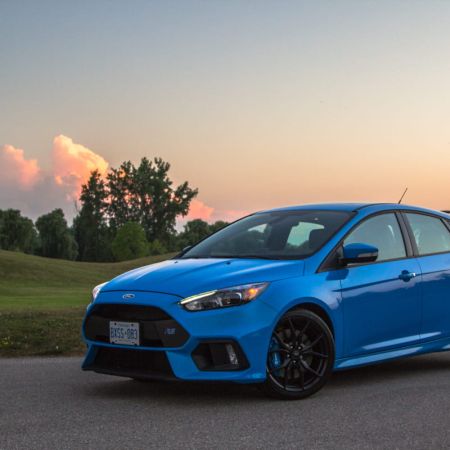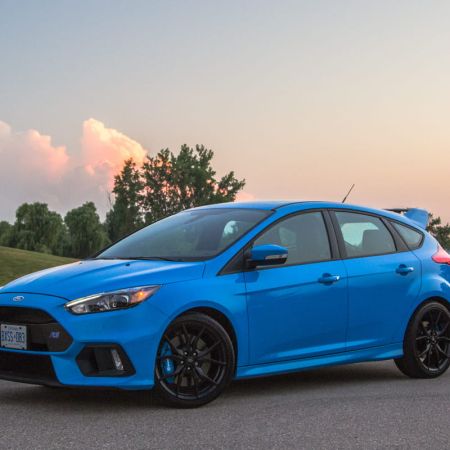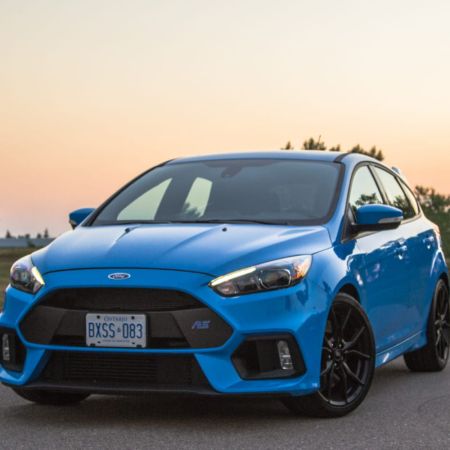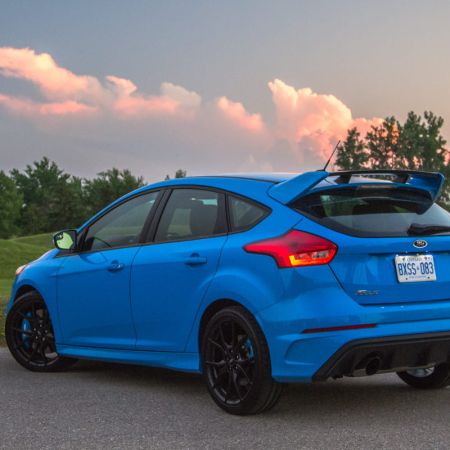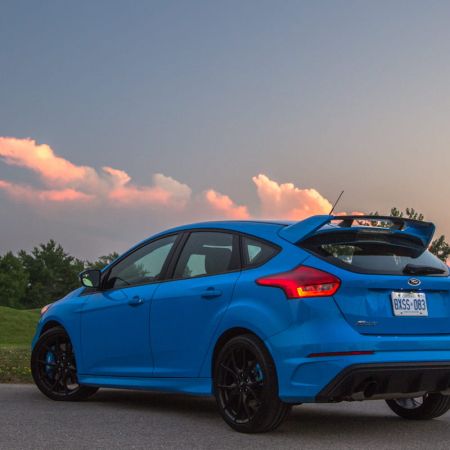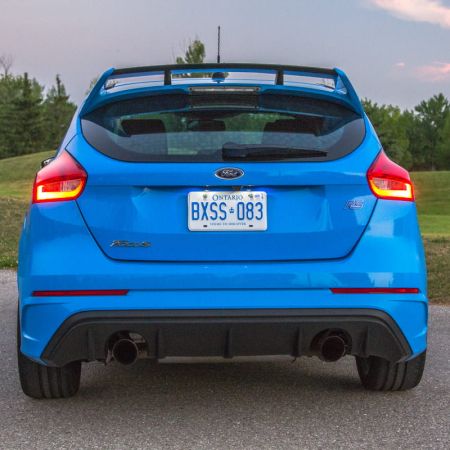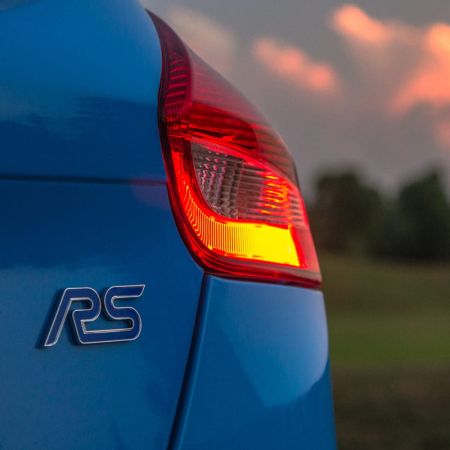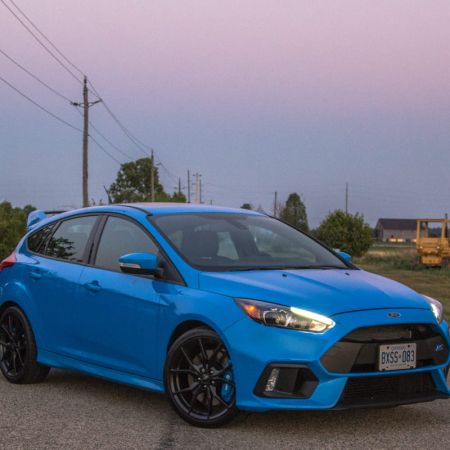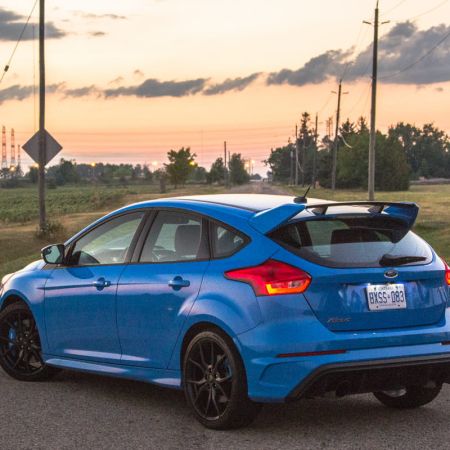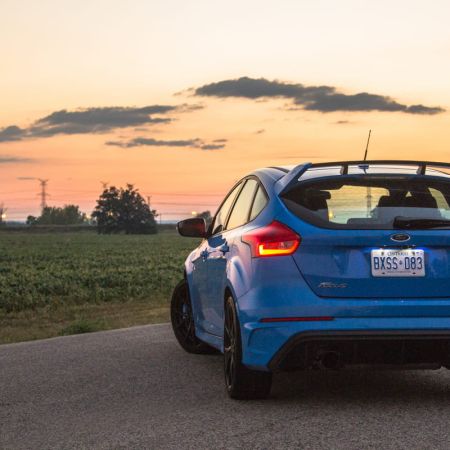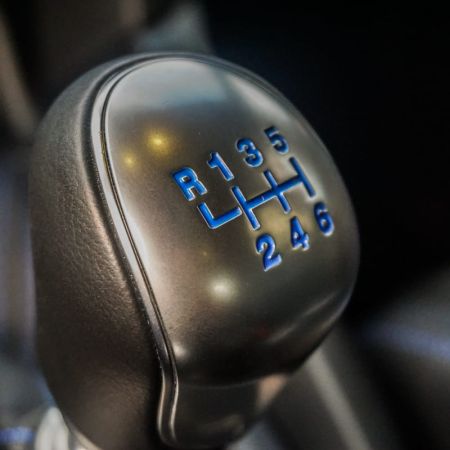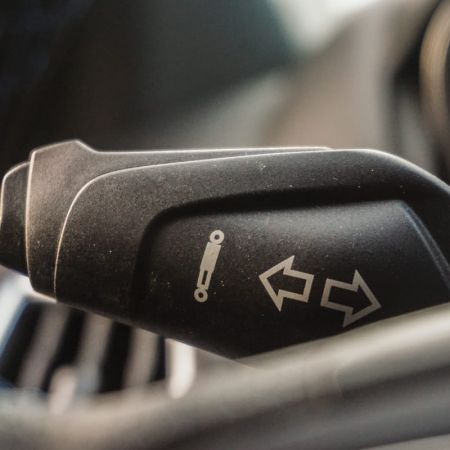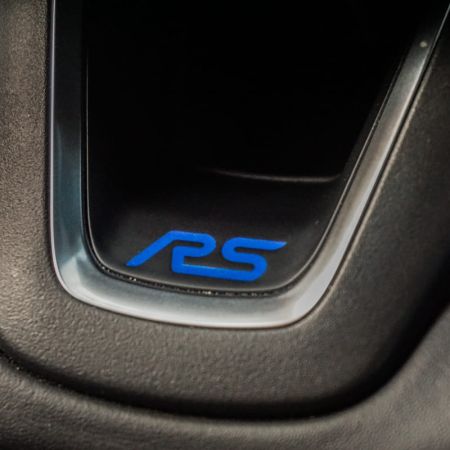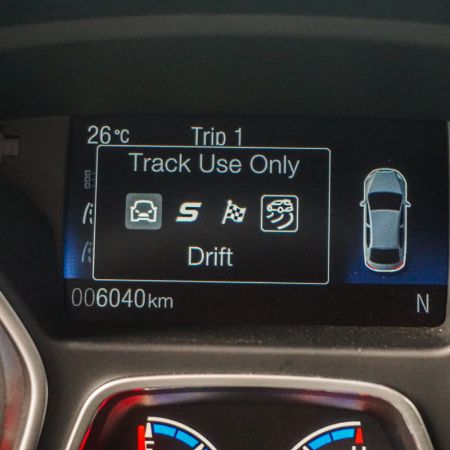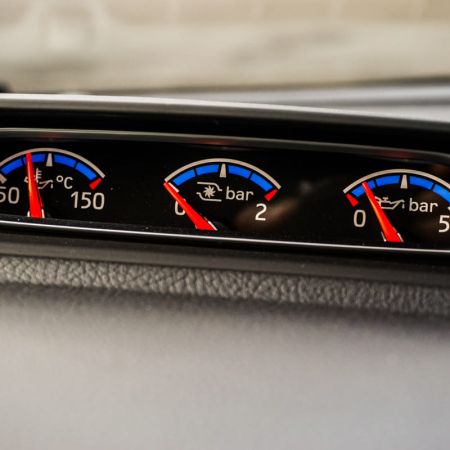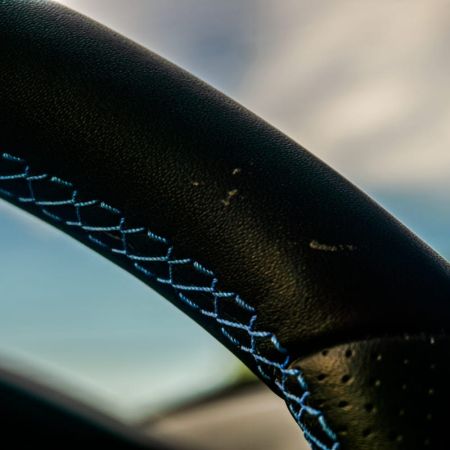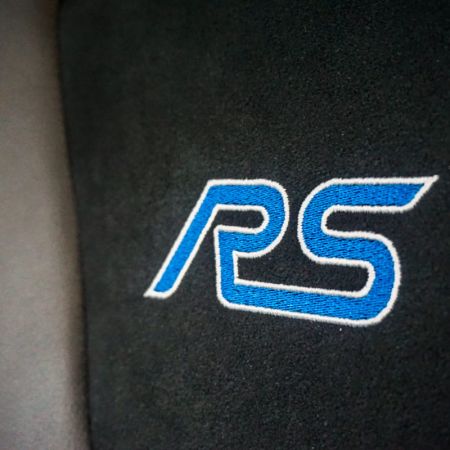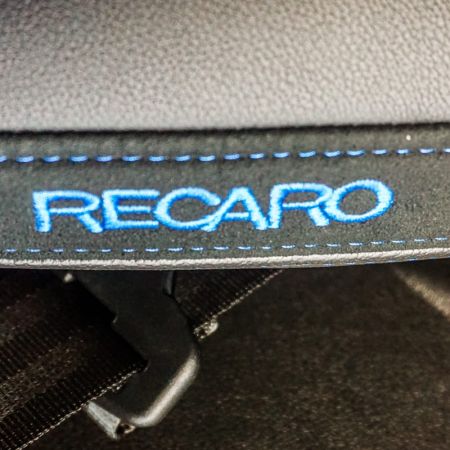The hot hatch/sedan segment is seemingly better than ever. With wild entries like the new Volkswagen Golf R, the Subaru WRX STi, and even “lesser” rivals like the Ford Focus ST (reviewed here) and Mini Cooper S, the choices are plentiful. Easily the talk of the town this year, Ford dropped a bombshell on this class and wants to take home the grand prize for having the best one. Ever since we heard of its debut, the eagerness slowly built up, until our week with the 2017 Ford Focus RS came. With more horsepower and torque than all its rivals, and an apparently-better all-wheel-drive system, the Focus RS should be a runaway winner.
My personal mantra is to not read any other outlet’s review on a vehicle that I know I will be testing that year, as to not cloud my judgment before I have tested it. With the Focus RS, I employed this same strategy, but this car was hyped up nearly as much as the Scion FR-S and Subaru BRZ (reviewed here) when they debuted back in 2013. With its built-in “Drift mode” and the highest horsepower/torque numbers among its opponents, this car was expected to be the best thing since sliced bread. The long waitlists and dealer markups are only a testament to how much the public wants the Focus RS.
Ford uses a heavily re-tuned and overboosted version of the Mustang’s 2.3L turbocharged four-cylinder in the Focus RS. Here, it pushes 350 horsepower at 6,000RPM, and 350 lb-ft of torque at 3,200RPM. The car is fast, and the response is there instantly. The boosted motor hustles to 100km/h in just 4.75 seconds, and turbocharger lag is minimal. The only available transmission is a six-speed manual, which is almost surprising given the complicated all-wheel-drive system.
Handling? Stopping? The Focus RS is a solid performance machine, and its demeanour on the road delivers an experience reflective of this. The handling is sharp, and steering turn-in is actually a bit sharper than the Golf R we drove it back to back with. In “Drift” mode, the car is prone to intentional oversteer, and this setting allows even the most novice drivers to slide the Focus like professionals. Of course, this will wear down the Michelin Pilot Sport Cup 2 tires very quickly, and also should only be done in a closed course setting. The brakes are four-piston 350mm Brembos, and stop the car while pulling the front of your face off with the force.
Ford has worked hard with an engineering firm called GKN to develop the Torque Vectoring Rear Drive Module (RDM). This system is a rear differential that uses hydraulic clutches for each rear wheel. These clutches let the RS send all available power to either rear wheel. A fun note here is that when using launch control (standard feature), the rear axle is locked. On highway runs, the AWD system sends power to just the front wheels for optimal economy.
For ride quality, the new Tenneco-designed shocks control the firm springs, with electronic valves within the shock piston. Adjusting these valves can dampen them by 40% when the car is placed in its “Sport” setting. Overall manners on the road are extremely firm (more on this a bit later), but on a track, this thing will be the king. It’s not just a Focus ST with AWD and a 100-horsepower boost – the RS has a tweaked and reinforced chassis and a suspension setup that sets new benchmarks within the hot hatch class.
There is definitely some artificial sound piped into the cabin, which means the RS doesn’t sound too different from the Focus ST from the driver’s seat. From the outside, it sounds particularly good, and the exhaust has a distinctive “burble” to it. The Focus’ sound is about as good as its looks, which in my eyes are the sharpest in the segment. The regular Focus is already attractive, and the Nitrous Blue (extra $995), flared fenders, big hatch spoiler and aggressive 19” wheels enhance that image even more.
The Focus RS has a small 46L fuel tank, that requires 91-octane premium fuel or higher, and recommends 94-octane. Our test took place on 94-octane gasoline, and we averaged 11L/100km. This consisted of some spirited driving as well as a couple of solid highway runs. Keeping the RS out of boost will render better fuel economy, and I can foresee highway-only trips returning as little as 8.5L/100km.
Both the Focus and the Golf R have very livable interiors packed with technology. Ford uses SYNC 3 (reviewed here) for infotainment, and the car comes with navigation, Bluetooth connectivity, heavily-bolstered Recaro seats, and a sunroof. It’s worth mentioning that the Golf R cannot be had with a sunroof, so another point towards the Ford here. Interior ergonomics are “okay” at best though – I’m not a fan of the layout and the seats are far too aggressive for daily use. I’m 6’1/175 and anybody porkier than myself will have trouble staying comfortable.
The Focus RS is a capable car, but it’s not perfect – far from it. If you’re not on the track, which will be the majority of the time (unless this is a dedicated track rat), the ride is absolutely atrocious in “Sport” mode. Things soften up in “Normal”, but the Golf R still has a far superior ride as far as comfort is concerned. The interior ergonomics aren’t great, and at 6’1, the dashboard protrudes too much for my liking, taking away legroom. Lastly, the clutch is far too heavy to use on a daily basis, especially if your commute involves any heavy traffic.
If you’re on a track, the Focus RS is the runaway winner. It will set the best track time on the big-boy tracks, and win plenty of prizes at the weekend autocross circuit. However if you’re daily driving the car, the Volkswagen Golf R (reviewed here) provides a more comfortable and livable experience with 90% of the capability. The appeal of a hot hatch to me as an enthusiast is the ability to use it year-round, every day of the week. The Ford’s clutch would make it far too tiresome in everyday traffic. Plus, a Golf R can be had almost loaded for $7,000-$10,000 less than the $51,000 Focus RS tested here.
Ford is on a roll this year, with new models such as the Shelby GT350 (reviewed here) and the hottest Focus sold in North America to date. The 2017 Ford Focus RS is full of hype, but that hype delivers if the goal is to have the best hot hatch for a track day, packed with the latest engineering and technology. The torque-vectoring diff and Drift mode are insane, and the car is definitely a spec sheet guru. However, if your hot hatchback is multi-purpose, and you need it to get to work and back, or take the kids to school a few times a week, it’s worth evaluating the other options before making an informed decision.


